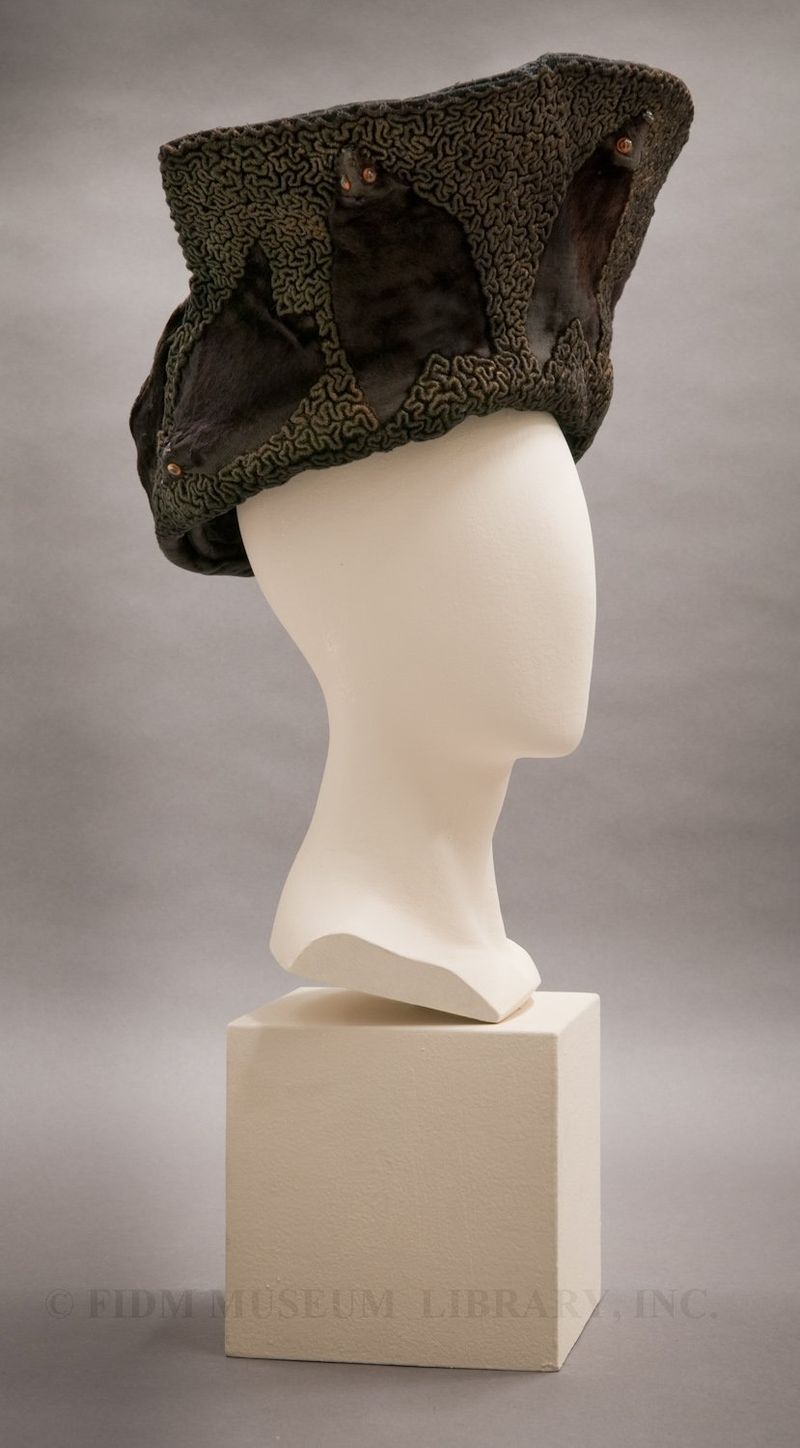What's Halloween without a bat? These small, flying mammals are a favorite Halloween motif, appearing as costumes, decorations, even candy. Though they're generally harmless to humans, western cultures usually consider bats the eeriest of creatures. Blame this bad reputation on their nocturnal lifestyle, and the blood-sucking habits of vampire bats. Though most bats eat insects or fruit, vampire bats eat blood, sucking it from cows, chickens or other livestock in the dark of night. Though humans aren't the vampire bat's preferred meal, they occasionally bite people, sometimes transmitting rabies. Though a vampire bat's bite doesn't turn an animal or human into a blood-sucking monster, western culture typically associates bats with death, danger and disease.
During the latter half of the 1910s, the bat was a surprisingly popular motif. In 1916, Vogue featured a cut-steel bead bag with a red-eyed bat as the central motif. A year later, a Vogue article on women's millinery fashions highlighted a hat with two fully extended bat wings cupping the crown of a beige hat trimmed with sable fur. Bats were not the only animal-based millinery embellishment; feathers and fur were also widely used to create the statement hats popular during the second decade of the twentieth century. Our bat hat is composed of silk velvet, faux astrakhan fur and bat heads.
 Hat
Hat
c. 1916-18
Museum Purchase in honor of Julia Long
2009.5.69AB
Why was this uncanny creature a popular decorative motif? World War I began in 1914, and more than 16 million soldiers and civilians died before the war ended in 1918. Never in history had war casualties been as extensive, nor the mourning as widespread. For women, black dress and accessories served a dual purpose–mourning dress for family and friends killed during the war, and practical work attire. With men entrenched at the Front, women shouldered the burden of industry; civilian war work did not allow them to spend as much time, money, or effort on grief-specific clothing.
This hat is an unusual example of headwear from that chaotic time. Its silk velvet and faux astrakhan are non-reflective materials, suitable for deep mourning. The five bats encircling the up-turned front brim set this hat apart from typical mourning garb. Though bats are symbolically linked to death and darkness, this literal interpretation isn't usually applied to mourning dress or the loss of a loved one. The bat motif's association with vampires and the female vamp cannot be overlooked. They way those creatures drained the life out of their victims is analogous to the total destruction caused by World War I and the near-total loss of a generation of men.



What an amazing piece! Real bat heads with velvet bodies? How sumptuous! Dracula was published in 1897 and Nosferatu was filmed in 1922 – what could have sparked such interest in bats in the intervening years… could the increasing public outcry against using plumage for hats have motivated an interest in another creature of flight?
Hi Caroline,
I had the exact same thought process! I looked up both Dracula and Nosferatu’s dates too. I had the same thought about millinery plumage as well. It’s definitely a topic that invites more research.
I also wondered about Marchesa Luisa Casati. Though she was certainly one of a kind, her style definitely tilted towards the more eccentric. How influential was her darker sensibility? But with bats in Vogue they were definitely a fashion item, not an oddity. So much to unpack!
Julia Long, one of our former staffers, published a paper called “Portable Pets: Live and Apparently Live Animals in Fashion, 1880–1925.” It addresses this hat and the larger phenomena of animals in fashion. Here’s a link to the citation: http://www.ingentaconnect.com/content/maney/cos/2009/00000043/00000001/art00008.
Wow, that is some hat! Great post too.
Just an FYI–vampire bats don’t suck blood, they bite an animal and lap up the blood as it drips from the wound.
Sarah Bernhardt had a bat tiara!
Can’t wait to find a picture of Sarah Bernhardt in her bat tiara! Excuse me, I’ve got some Googling to do…
Consider how many flying creatures have been featured in clothing or jewelry…in the Art Nouveau artistic vocabulary we had dragonflies that were part human, as well as many other insect forms…here we’ve got bats…and many eras saw women’s hats decorated with whole stuffed birds. So what is it with creatures of flight, I wonder? Fascinating article–thanks for such interesting reading!
I was wondering how the inside might look? I am planning to replicate this hat for my University millinery module!